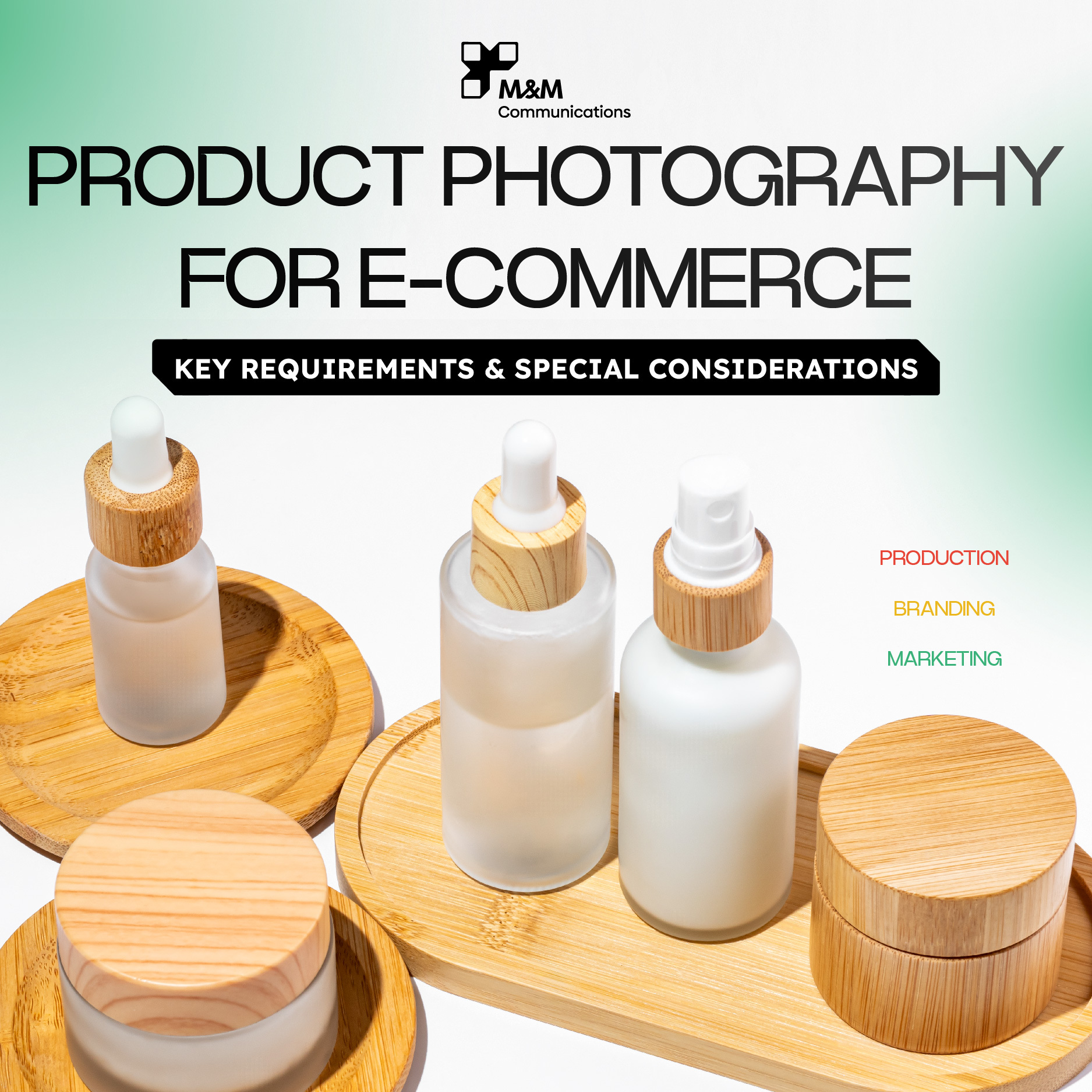
PRODUCT PHOTOGRAPHY FOR E-COMMERCE: KEY REQUIREMENTS AND SPECIAL CONSIDERATIONS
When selling on e-commerce platforms, product images act as your “silent salesperson,” grabbing attention and convincing shoppers to click “Buy Now.” Unlike visuals used on social media or brand websites, e-commerce platforms have stricter requirements in terms of technical quality and presentation.
A beautiful image doesn’t necessarily mean an effective one—especially if it fails to meet platform standards or doesn’t highlight the right product features. In this article, M&M Communications outlines the essential guidelines and special considerations for taking product photos tailored to platforms like Shopee, Lazada, and Tiki.
White background – The standard requirement

Most e-commerce platforms require main product images to have a clean white or light solid background. This ensures your product stands out and maintains consistency across the marketplace.
Tips:
Avoid patterned or colored backgrounds that distract from the product.
Clean cut-outs with no jagged edges or drop shadows.
Use even lighting to eliminate harsh shadows or dark spots.
>>> White Background And Concept Photography - Differences And Effective Applications
Show the full product & key features
Since customers can’t physically touch the product, your photos must showcase its shape, material, texture, color, and functionality.
Suggestions:
Include multiple angles: front, side, back, ¾ view, close-ups of textures.
For products with multiple variants (color, size), combine them in one image or display in sub-images.
Create a feature highlight image with key selling points, sizes, or details.
Include packaging (if applicable)

Online buyers care about packaging—especially for gifting or verifying authenticity. Showing the box or branded wrapping boosts trust and professionalism.
Ideas:
Display the product next to or inside the packaging.
Zoom in on security seals, labels, or anti-counterfeit stickers.
>>> Product Photography For E-Commerce: Key Requirements And Special Considerations
Image format & aspect ratio
While each platform has its guidelines, the standard is a 1:1 square image with at least 1000 x 1000 px resolution.
Tips:
Use high-resolution photos and retain original files.
Ensure the product occupies 80–90% of the frame.
Avoid adding excessive text or logos in the main image (use sub-images instead).
Add lifestyle & in-use images

Alongside clean white background shots, consider adding 2–3 lifestyle photos that show the product in real-world use. This helps buyers imagine how the product fits into their lives.
Examples:
Ceramic mug: placed on a breakfast table.
Night lamp: styled in a cozy bedroom setting.
Sports bottle: carried by a model jogging outdoors.
Avoid over-editing or using unrealistic filters
E-commerce images must be honest and true-to-life. Over-saturated colors or digitally altered shapes may result in buyer complaints or returns.
Tips:
Prioritize brightness and clarity while preserving true product color.
If using 3D renderings, clearly label them and pair them with real photos.
CONCLUSION:
A clean, platform-compliant photo set helps your product stand out, builds credibility, and increases your conversion rate. In just a few seconds of scrolling, your image determines whether shoppers click in—and whether they trust what they see.
At M&M Communications, we offer specialized product photography services for e-commerce platforms. From concept development to lighting, styling, and post-production, we ensure your images are optimized for search, visibility, and performance—no matter what category you sell in.
